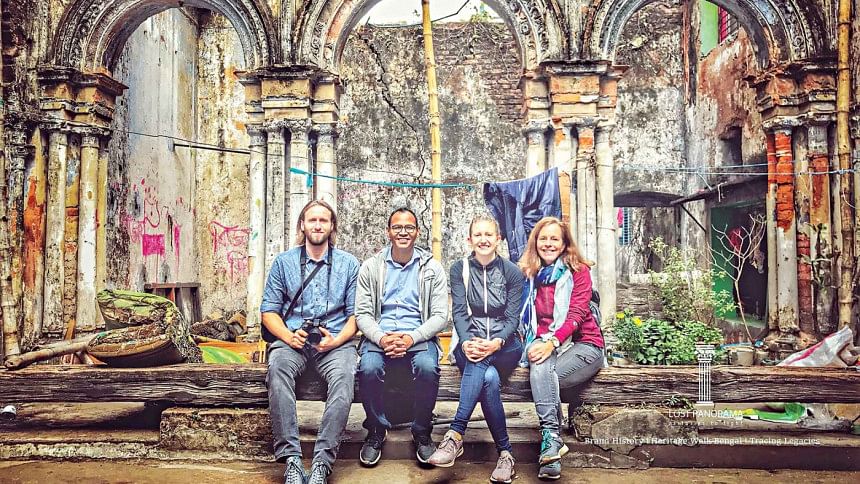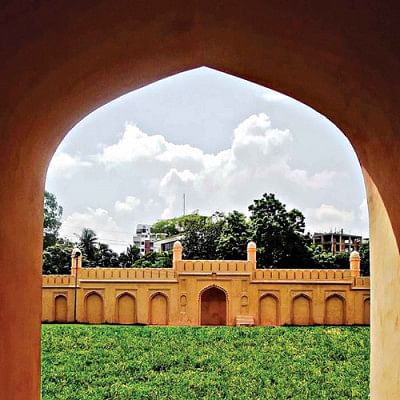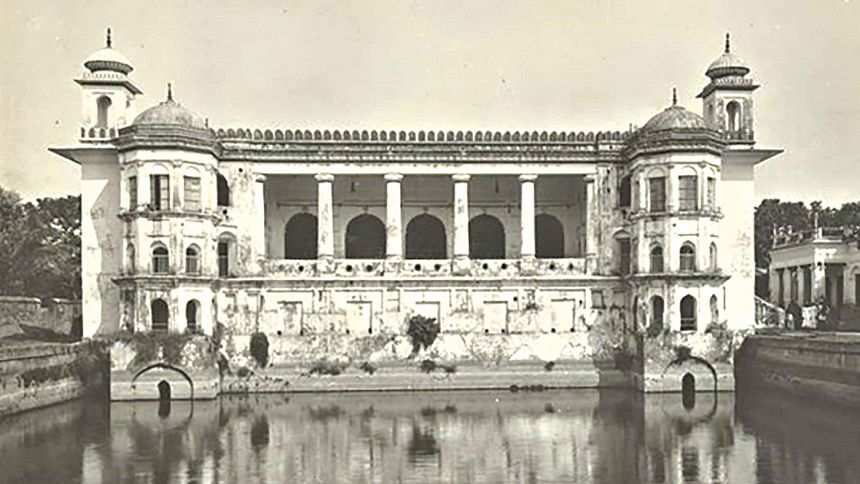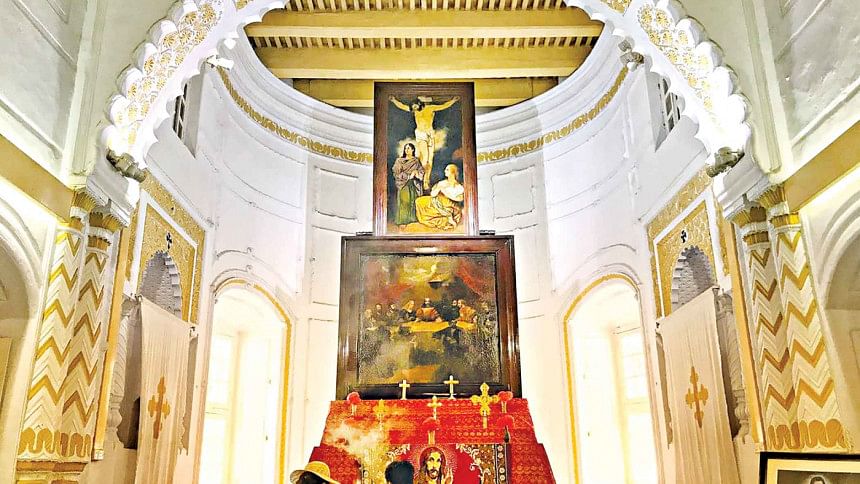Exploring the layered histories of Dhaka

Densely populated and a witness to centuries of Mughal, British, Pakistani rule and now, the capital city of Bangladesh, every nook and cranny of the city bears a strong link to the multicultural heritage of the city and the country at large.
Dhaka simultaneously blends the past, present, and the future in its unique transformation where every minutiae aspect of its culture is linked sharing an-all-encompassing history and legacy of its yesteryear charm. This panoramic view of the city and its complexities of known and relatively unknown culture is shown by "Lost Panorama".

Lost Panorama is a historical research-based organization that commenced its journey in navigating pathways for Bangladeshis and foreigners alike in 2015 allowing history enthusiasts to eke out a lived historical experience.
Started in 2015 by Suman Kumar Roy who, spending his youth in Puran Dhaka, always had a beguiling interest in Dhaka and its complex history that harkened back to the 7th century, when Dhaka first got its name from Dhakeshwari.
"I would always have my friends call me when they come to Old Dhaka, where I would show them around famous landmarks such as Ahsan Manzil", remarked Mr Suman "and slowly by slowly, I felt the need for the history of Dhaka needs to be institutionalized and organized due to the risk of being lost". It was this innate fear of Dhaka losing its centuries of history that animated his vision of presenting the history of the city linking the buildings, walls, alleyways, and objects with their shared historical resonance.
When asked about the vital role of history, Mr Suman said, "showcasing our history as Bangladeshis is important as it is an intrinsic part of who we are as a nation". While magazines and newspapers, in his opinion, do share snippets of history at times, there need to be more vigorous debates arranged and research conducted to get a sense of our identity.
Lost Panorama allows engagement with history in a number of ways. Its Heritage Walk Bengal tour allows you to rediscover the old city in enlightening ways as you learn the rich layered storied histories of each of the places. The alluring walks, which span 3 hours in total, bring to you fresh and hidden perspectives of historical and aesthetical significance. One of their most famous walks is the Armenian Walk, which is a journey of self-discovery of a lost remnant of a people's heritage that many in Bangladesh either know little of or do not fully acknowledge.
Inquisitive research is carried out trying to weave out stories buried deep in books, archives and documents helping Lost Panorama personnel to highlight many new facts that many of us do not encounter on the internet. The layers of history are peeled off one by one helping to understand the significance and mapping of the locations covered. The Armenian heritage presented through the prism of their famous schools, such as that of Pogose School and their churches helps to widen contemporary knowledge of the great metropolis we today call our home.

In the time of a raging pandemic, the walk takes place through virtual reality technology and is screened on Zoom. Each place is carefully documented to give viewers the lively feel of being front and centre of the historical places. The virtual walk takes place for an hour covering every nook and cranny of historical value.
Lost Panorama also provides specialist archival research and media services to a varied number of clients ranging from organizations to institutions to heritage professionals to individual history buffs. It also plays an important part in tracing legacies of many people who have their ancestral roots in modern Bangladesh. Heavy archival research is carried out trying to stem out the linkages of historical living in what is today's Bangladesh.
For their future plans, they are currently working on product development through collecting antique paints, books, and bindings which they hope to sell on their website. Heritage walk towns will be further developed with more in-depth research. Bangladesh, today, is one of the world's fastest-growing emerging economies and has seen the growth of many homemade brands such as Akij, whose brand histories is something Lost Panorama wants to focus on, as these brands too, are a paragon of the country's economic resilience.
One of the interesting stories associated with Lost Panorama is their tracing of legacies across borders where many people of this part of the world fled from due to the socio-political turmoils of those days. A family in West Bengal with roots here had wanted to see their old temples and fields where Durga Puja would be celebrated with much pomp and gusto. The places would be shown virtually to those who desired to connect to their Bangladeshi roots and create a bond of hope and aspiration to one day be here physically.
One of the iconic moments of connection and self-discovery is the famed story of Jamie Henshall, an Englishman who was in search of his Bangladeshi father who left him and his mother very early in their lives. This "Lion-like" story was covered by many media houses in the country with Lost Panorama playing a vital role in connecting him with his extended family in Sylhet in 2017. From 2014-2017, the search went on resulting in the reunion of a family across borders and continents.
Over time, Lost Panorama has grown into a one of a kind institution in Bangladesh, perhaps, the only of one of its kind as it showcases a living and lived experience of history. With the help of cultural heritage consultants, Steven C. Dinero and Wolf Bowig, Anthony Loomans as the Strategic advisor, and Lopa Roy as the artistic director, the team brings to all of us, a truly refreshing overview of Bangladesh we only read in the textbooks, but never get to feel or experience. History after all is about living and persisting. That is, after all, the true legacy of Bangladesh and that is our story.


 For all latest news, follow The Daily Star's Google News channel.
For all latest news, follow The Daily Star's Google News channel. 



Comments